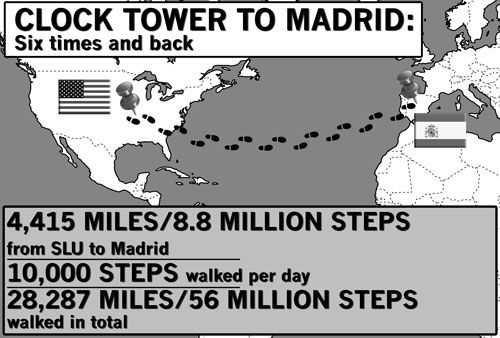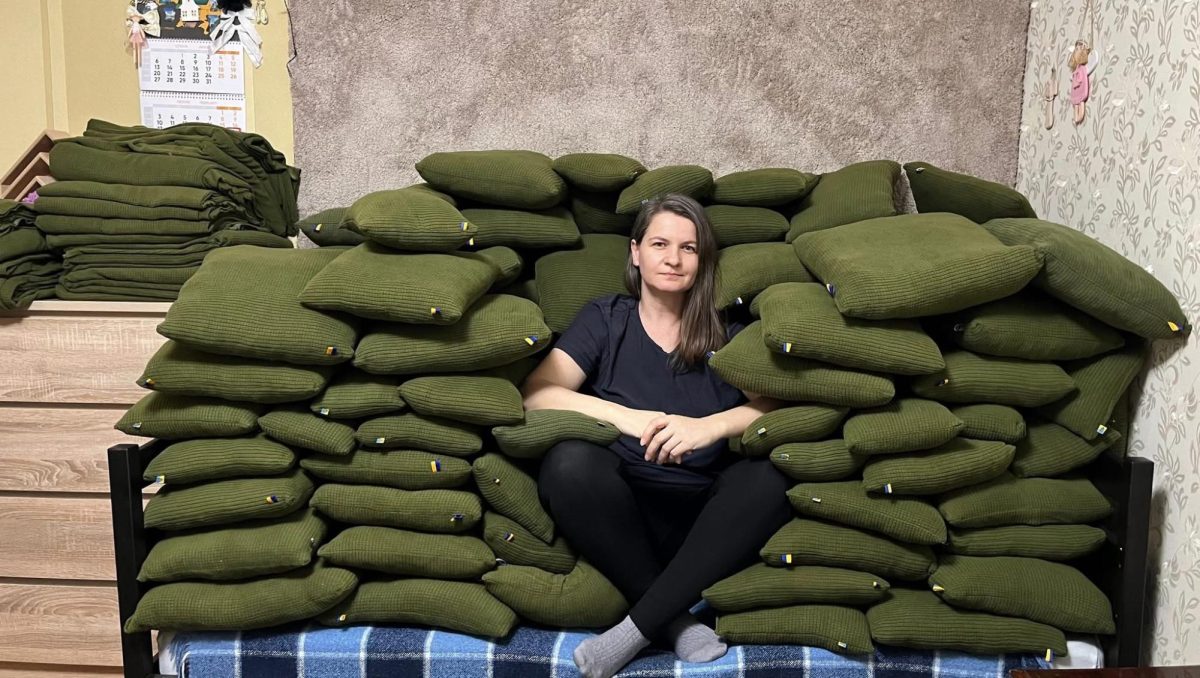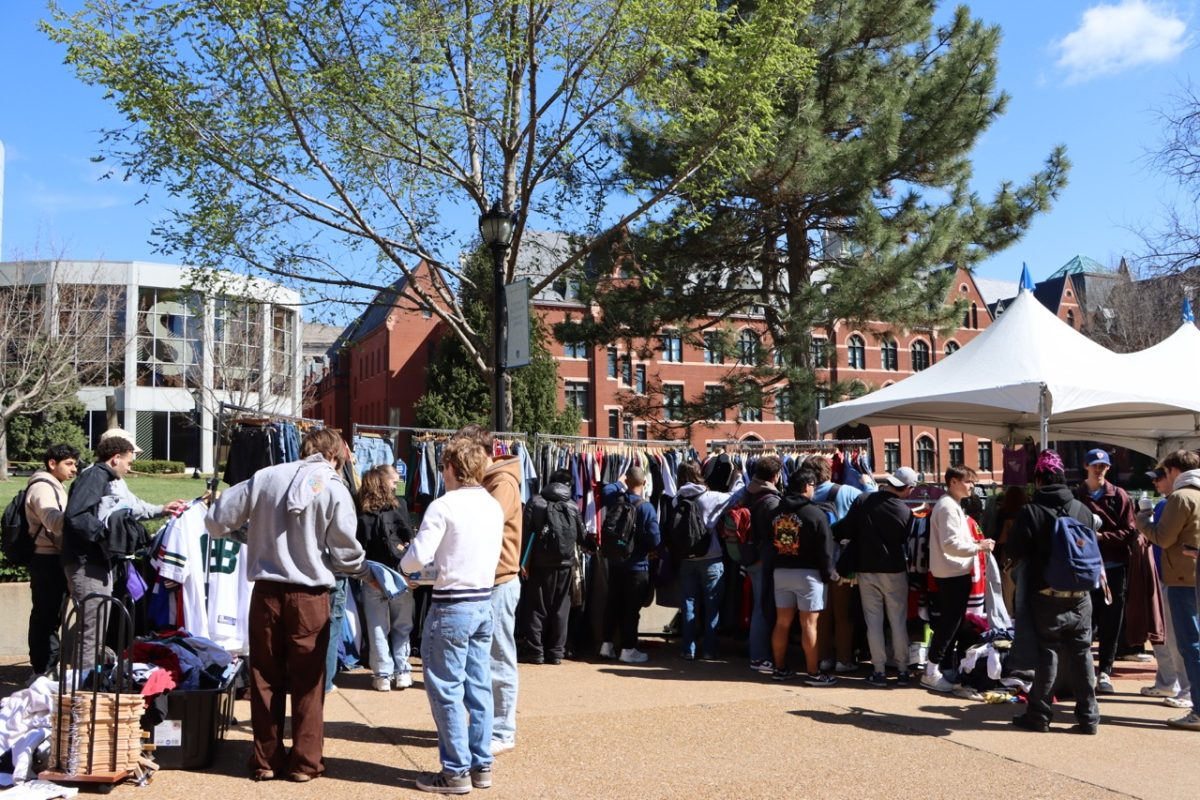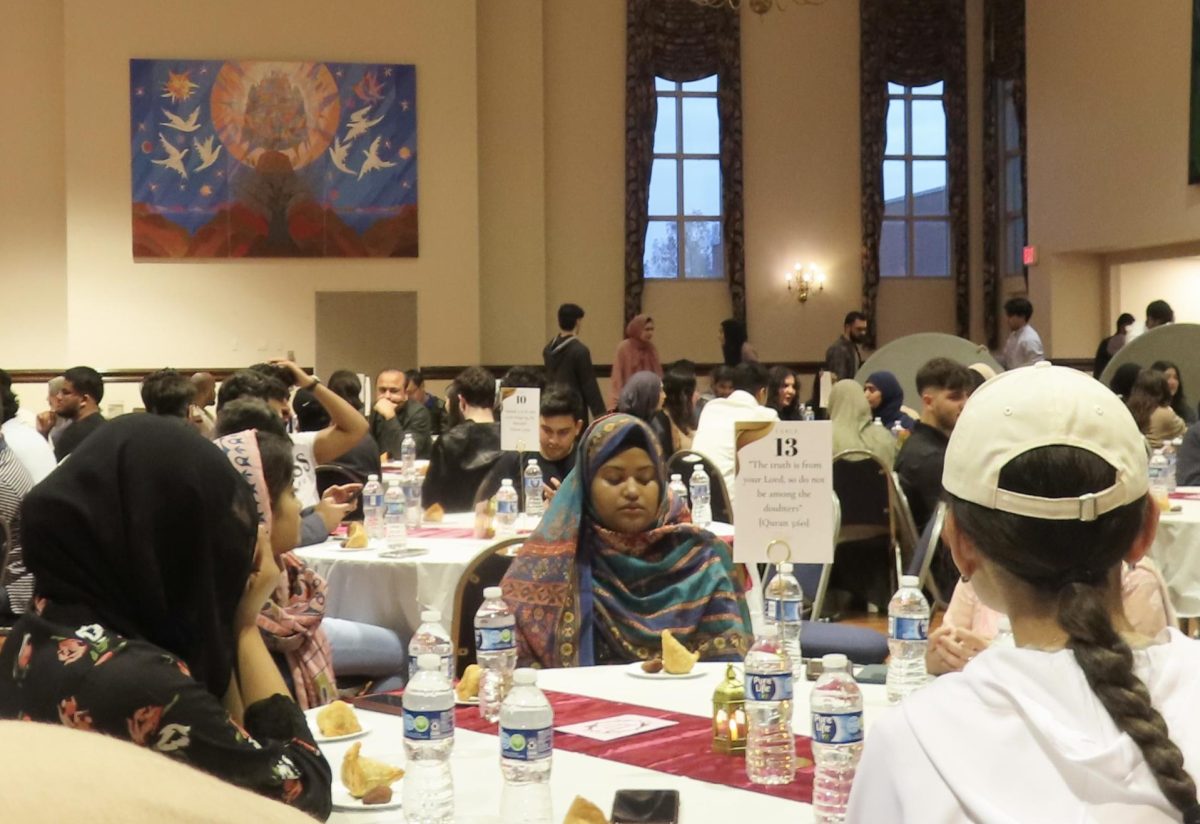Contest participants walk to Madrid campus six times
More than 900 students, faculty and staff of the Saint Louis University community came together this summer in order to improve and maintain a healthier and more active lifestyle through the “Walk to Madrid” program, held this year from June 1 to Aug. 24.
The general goal of the program was for the participating teams to take a virtual walk – that is, to travel the equivalent distance without actually having to walk across the Atlantic Ocean – from the SLU campus in St. Louis to the SLU campus in Madrid, a distance of 4,415 miles, according to the program’s website. In order to accomplish this task, participants were encouraged to take 10,000 steps per day.
The idea came from collaboration between Human Resources, Campus Recreation and SLUCare Cardiac Rehab.
“We wanted to incorporate the concept of 10,000 steps each day with walking to our Madrid Campus,” Eric Anderson, director of Campus Recreation, said. “Overall, it was meant to increase participants’ physical activity through a team concept and share weekly tips related to overall wellness.”
The teams were made up of five to 10 students, faculty or staff, and each team member received a pedometer to count his or her daily steps.
At the end of every week, the teams would sum up their total steps and use the pedometer to calculate how many miles they had traveled.
The program was both competitive and cooperative, with each team fighting for awards for the most miles traveled, while at the same time combining their totals into one huge step-count in order to reach the Madrid campus, which is approximately 8.8 million steps from the Frost Campus clocktower.
Along with step totals, each week was complimented by a “Tip of the Week” to help participants stay healthy and keep going.
Some topics included proper shoe choice, target pulse and heart rate, workout information and maintaining an exercise program well after the “Walk to Madrid” competition was complete. Competitions also included awards for team spirit, best walking photo and most improved team.
Anderson said that the program was a great success, with some teams walking a distance equal to cities like Pittsburg, Washington D.C., and the number one team, Extreme Heat, making it to the Atlantic Ocean.
In total, the participants made it to Madrid and back three times for a total distance traveled of 28,287 miles, and a total step-count greater than 56 million.
Heidi Buffington, team captain of the Stride Rights, one of the top five teams at the end of the program, said that the program had a positive effect on those that were already physically active, as well as those who didn’t exercise as much.
“For people who aren’t usually active and maybe should be, it was a fantastic program,” Buffington said.
Buffington is an employee at SLU’s Madrid campus and participates in triathlons. She said that, for her, the program didn’t change much about daily life, but for those on her team that were less athletic, she saw definite improvement.
“Many people on my team were commenting that they were taking the stairs instead of the elevator, or were spending time walking after meals,” Buffington said.
Buffington also mentioned that, for the most part, step-counts improved week by week for her teammates and herself. In the end, her team walked 601 miles, a mileage greater than the distance from St. Louis to Pittsburg.
“We’d have conversations about how we did during a specific week and I think this helped to keep us going,” Buffington said.











